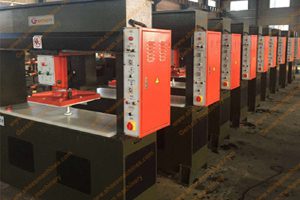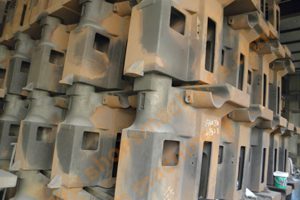How is leather made?
There are many processes that go from raw hide to leather. Many homework needs to rely on the “hands” of the staff. What makes me feel deeply is the importance of “intuition” and “taste.”
Quietly waiting for the penetration of oil
Do you know how the “leather” of leather goods is made? In the close-up study of the tanning workshop, it is not difficult to find that the heroic and refreshing tanning work is full of keen intuitional movements of the staff. It is the result of millions of experiences, which makes me feel deeply. It is really impossible for the tanning industry to lose this group of people.
As soon as you approached the workshop, you could hear the sound of the water. The huge squatting trough passing by was spinning with water. There was only one in operation at the time, but there were still many squaring troughs of the same size at the rear. This huge trough was called “drum” . The staff will put the medicine in the drum and then soak the raw skin in the medicine, and then rotate it for a few days to soften the original skin and perform hair removal.
Careful observation of the inside of the drum reveals that there are many raised obstacles. This is to allow the leather to be hooked smoothly during rotation to increase the efficiency of the rotation, so it is specially set. The huge drum looks like a part of the ship. In fact, the drum was originally built by the shipbuilding staff.
One night, let the leather sleep well.
The oil rustic leather (the leather used in the UNIQ liberta series), which is made in this workshop, enjoys the pull up effect of oil from the inside of the fiber to the surface. The longer the use, the more pronounced the change in the color of the leather produced by the influence of grease, the more it has a charm. (Although the black color is darker, the discoloration is less obvious, but it is the same as brown.)
The oil used in tanning is a golden fat like honey. It is a machine that can penetrate grease into the leather; first remove the oil from the large oil cylinder and quickly sprinkle it on the cylinder. When the inside and outside of the cylinder are filled with oil, the leather is rolled in. After the leather is fully absorbed, the drying machine is used, and finally the leather is hung for one night to allow it to dry completely. Wait until the oil is completely infiltrated. If you don’t want to let the leather rest, you won’t have a beautiful luster.
When the grease is completely infiltrated, the color will increase in depth and the color difference will be stable. The feeling of this subtle color change can’t be understood by the staff’s description. Only when I get along with the leather every day, I always use the eyes to look at the tiny differences that the leather craftsman will find.
There is only a “color matching” program that can be performed by a small number of professionals. Although the final color of the leather will be handed over to the machine, the color must be handed to the senior staff. Mr. Gully, who has 14 years of experience in tanning, reproduces the process of confirming color for us.
In order to achieve the same color as the sample, it is necessary to select the main dye used from more than 10 kinds of dyes and then fine-tune the color. Such manual work does not have a color matching manual for reference. First, add a light color (yellow) to the dye jar as the base, and the darker color will be added at the end. Since the dye cannot be adjusted back to light color once it is deepened, the coloring always starts with a light color to avoid unnecessary waste. Mr. Gully joined the orange and brown without hesitation, and the leather in his hand slowly began to approach the color of the sample. The color of the dye in the dye jar is very dull, so it is hard to imagine what color it will be on the leather. Therefore, it is impossible for a person who has no experience to judge whether or not “coloring is completed” from the prepared dye tank. This is an assignment that requires imagination and experience.
Everyone has different ways of blending colors. Even the same person will have different color matching methods depending on the mood of the day. The most important thing about blending colors is intuition. You must have experience to get the right color. It can be said that you need to have an intuitive and tasteful work, no matter what color is missing. This workshop will first let the novice staff take up different assignments, and wait until after accumulating three or four years of experience, then judge whether it is suitable for the assignment of color.





